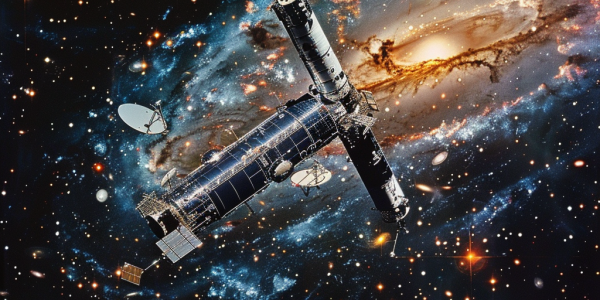New Insights into FU Orionis: A Young Star’s Extreme Conditions and Planet Formation Challenges
A groundbreaking study using Hubble Space Telescope data reveals that FU Orionis, a young star 1,360 light-years away, exhibits extreme temperatures of approximately 16,000 Kelvin. This discovery raises critical questions about rocky planet formation in such harsh conditions. Researchers highlight the star’s rapidly spinning accretion disk, which creates intense heat and instability, complicating the development of Earth-like planets. These findings not only enhance our understanding of stellar evolution but also illuminate the intricate processes governing planet formation in the universe.
Saturn’s Rings Showcase Rare Optical Phenomenon Ahead of 2025 Alignment
Saturn’s rings recently showcased a stunning near-edge-on appearance, captivating astronomers and stargazers alike. This rare optical phenomenon, occurring every 15 years, allows for unique visual effects, although the next alignment in March 2025 may challenge observers. Discover the intricacies of Saturn’s rings and the fascinating illusions they create in the night sky.
Massachusetts Senators Seek Clarity on Chandra X-ray Observatory Funding
A bipartisan group of U.S. senators from Massachusetts is advocating for the Chandra X-ray Observatory’s funding amid potential budget cuts. As a cornerstone of astrophysics for 25 years, Chandra has enabled groundbreaking discoveries about the universe. The senators’ inquiry seeks clarity on its future and operational status, highlighting the importance of local advocacy in scientific funding decisions.
NASA’s Hubble and New Horizons Team Up to Capture Unprecedented Images of Uranus
NASA’s collaboration between the Hubble Space Telescope and New Horizons Pluto probe has resulted in groundbreaking images of Uranus, enhancing our understanding of the icy giant’s atmosphere and its implications for exoplanet exploration. This joint effort reveals intricate details and broader perspectives of Uranus, paving the way for future missions aimed at uncovering the mysteries of distant worlds.
Recent Astronomical Discoveries Illuminate Cosmic and Evolutionary Insights
Recent astronomical discoveries are reshaping our understanding of the cosmos, from the detection of an Earth-mass exoplanet orbiting a white dwarf to insights into ancient ecosystems and new dinosaur relatives. These findings highlight the resilience of life and the complexities of planetary systems, sparking curiosity about the potential for life beyond Earth.
Rare Celestial Event: Saturn’s Moons to Shine as Rings Narrow
Astronomy enthusiasts are in for a treat as Saturn’s rings narrow, making way for a rare celestial event. Mark your calendars for March 23, 2025, when Saturn’s rings will appear nearly edge-on, offering unique viewing opportunities for stargazers. This event, occurring every 13.5 to 15.7 years, coincides with multiple chances to observe Saturn’s moons, including Dione and Tethys, making it an exciting time for both seasoned astronomers and newcomers. Don’t miss the chance to witness the beauty of Saturn and its moons in the night sky!
Hubble Reveals Supermassive Black Hole Jets Triggering Stellar Eruptions in M87 Galaxy
Astronomers using the Hubble Space Telescope have discovered that jets from the supermassive black hole in the M87 galaxy trigger explosive stellar eruptions, known as novae, in nearby stars. This finding sheds light on the complex interactions between black holes and their cosmic environments, highlighting the significant role of black hole jets in influencing star formation and evolution across the universe.
NASA’s Hubble Space Telescope: Unveiling the Wonders of the Universe
Discover the latest findings from NASA’s Hubble Space Telescope, including a study on protoplanetary disks around the star HP Tau. Learn how Hubble’s images have shaped our understanding of the universe, from estimating its age to revealing the mysteries of black holes and exoplanet atmospheres. Explore the telescope’s groundbreaking discoveries and its ongoing impact on space exploration.
NASA Transitions Hubble Space Telescope to Single-Gyroscope Operation
Learn about the transition of the Hubble Space Telescope to single-gyroscope operation and its impact on its science mission. With the possibility of another servicing mission up in the air, find out how the HST continues to function after 34 years in space and the potential future for this iconic telescope.
Hubble Space Telescope Shifts to Single-Gyro Mode for Continued Observations
NASA officials announced a significant operational shift for the Hubble Space Telescope to address issues with aging gyroscopes. By operating the telescope in single-gyro mode, NASA aims to extend its lifespan and prevent disruptions to its observations of the cosmos.










